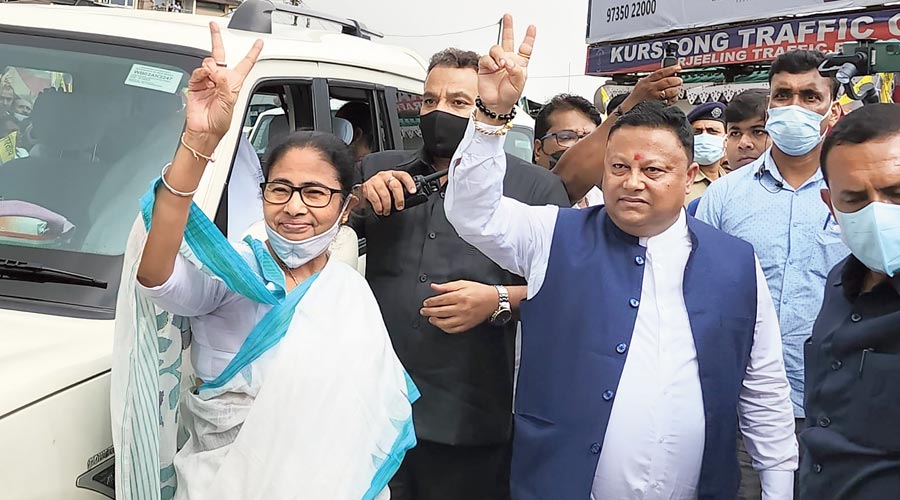Gorkhaland Aspirations Rekindled as Satellite Township Near Darjeeling Gains Momentum

Darjeeling – In the windswept hills of North Bengal, the contours of a long-standing identity struggle are once again being redrawn—this time against the backdrop of a proposed satellite township that may alter the face of Darjeeling’s famed landscape. The Gorkhaland Territorial Administration (GTA), the semi-autonomous body governing Darjeeling and its surrounding areas, has announced plans to develop a satellite township near Rangaroon tea garden, roughly 16 kilometers from the hill town.
The move, while rooted in logistical and urban planning concerns, arrives in a climate charged with political undertones, particularly as the Nepali-speaking Gorkha community revives its historic demand for a separate Gorkhaland state. It is a call that has echoed through generations—one rooted not just in geography, but in the collective memory of cultural alienation and administrative neglect.
The Ghosts of Gorkhaland Past
The Gorkhaland Andolan, which first erupted in the 1980s under the leadership of Subhash Ghisingh, was a fiery campaign for a separate state carved out of West Bengal for the Gorkhas. With roots going back to the colonial era, the demand gained traction from the community’s struggle for political recognition, distinct linguistic and ethnic identity, and a sense of belonging long denied by mainstream narratives. The movement resurged in 2007 under the more radical Gorkha Janmukti Morcha (GJM) led by Bimal Gurung, leading to violent clashes, deaths, and prolonged shutdowns that paralysed life in the hills.
While temporary truces were struck—first through the formation of the Darjeeling Gorkha Hill Council and later with the establishment of the GTA in 2011—the underlying demand for statehood never truly dissipated. For the Nepali-speaking Gorkha population scattered across the North East, this struggle is not merely political. It is existential.
Mamata Banerjee’s Calculated Resistance
Chief Minister Mamata Banerjee has consistently opposed the demand for Gorkhaland, casting it as a threat to Bengal's territorial integrity. Her administration has been accused of suppressing the identity movement with an iron hand—deploying security forces, arresting leaders, and diluting the GTA’s autonomy over the years.
Her recent remarks at an administrative meeting in Siliguri—where she mooted the idea of a satellite township for Darjeeling—must be viewed through this lens. To her government, decentralising Darjeeling's burgeoning urban sprawl may appear a matter of civic necessity. But to many in the hills, it is an extension of Kolkata’s administrative overreach into a region that continues to ask: Whose land is this, really?
Anit Thapa, Chief Executive of the GTA, emphasized the logistical advantages of the proposed township. “Rangaroon is ideal. It keeps traffic away from Darjeeling town and offers land that is technically under state control,” he told. Yet even Thapa, once aligned with Mamata’s camp, now appears cautious—promising to consult local residents before finalizing the site.
Tea Gardens and Tactical Real Estate
The choice of the Rangaroon tea garden is not incidental. As urban congestion chokes Darjeeling—home to over 1.5 lakh people and an annual influx of six lakh tourists—the need to expand infrastructure has reached a crisis point. But in the eyes of local activists, there’s a deeper worry: that the tea estates, many of which are now underutilised or abandoned, will be repurposed not for local empowerment but for state-sponsored expansionism.
There is also historical symbolism attached to Rangaroon. It lies along a trail once traversed by Tenzing Norgay Sherpa, one of the first men to summit Everest. For a community whose contributions to India’s armed forces and mountaineering legacy remain under-acknowledged, such spaces hold deep emotional value.
A Satellite Future or a Signal of Erasure?
Infrastructure development, when divorced from the socio-political context of a region, often risks deepening wounds rather than healing them. For many in the Gorkha community, the satellite township is seen not just as urban planning—it’s a metaphor. Is it a forward-looking effort to decongest Darjeeling? Or is it yet another attempt to dilute the hills' ethnic fabric under the pretext of progress?
The dreams of Gorkhaland still stir in the hearts of many Nepali-speaking citizens in the North East—across Assam, Manipur, and Sikkim—who see themselves bound by a shared history, language, and cultural pride. Their call is not one for separation, but for recognition.
As bulldozers prepare to chart new routes through old tea trails, the question that lingers is whether this "satellite Darjeeling" will uplift the people of the hills—or orbit a governance model that continues to sideline them.
In the misty dawn of a changing Darjeeling, only time will tell whether this new township will stand as a beacon of equitable development—or a monument to promises unfulfilled.
Gorkhaland



![From Kathmandu to the World: How Excel Students Are Winning Big [Admission Open]](https://www.nepalaaja.com/img/70194/medium/excel-college-info-eng-nep-2342.jpg)
